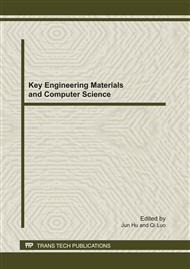p.505
p.512
p.518
p.524
p.530
p.536
p.542
p.548
p.553
The Numerical Study on the Environmentally Sustainable System - Ground-Source Heat Pump System
Abstract:
In this paper, the coupled thermal conduction and groundwater advection heat transfer model was developed according to the heat-transfer process between the heat exchanger underground and its ambient soil. Soil was considered as saturated porous medium. The paper analyzed that the influence of different inlet flow rate, inlet water temperature, and backfill material on the soil temperature field and heat exchange rate, compared the double U-tube and the single U-tube in numerical simulation. The results show that the enhancing of soil thermal conductivity, inlet water temperature and inlet water flow rate leads to the increase of the heat exchange rate of U tube heat exchanger, and the influence on the double U tube is relativity small. In addition, the heat exchange characteristic of the double U tube is superior to the single U tube. The result has guiding significance to the intermittent operation of the ground source heat pump.
Info:
Periodical:
Pages:
530-535
Citation:
Online since:
August 2011
Price:
Сopyright:
© 2011 Trans Tech Publications Ltd. All Rights Reserved
Share:
Citation:


